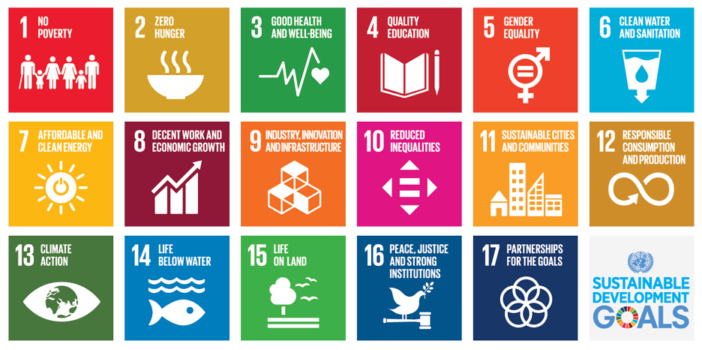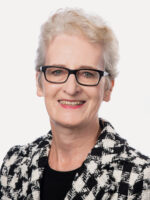Towards a more sustainable world: Teaching the United Nations Sustainable Development Goals (SDGs) in the classroom

«Business must be part of the solution to the world’s sustainability challenges. To do that, today’s business students must learn these skills so they may tackle the challenges as future managers and executives.«
Lise Kingo, CEO and Executive Director, United Nations Global Compact
The 2030 Sustainable Development Agenda, adopted by the United Nations in 2015, has become ingrained in all areas of governance and policymaking promoting economic development and social progress, which occurs in an economically sustainable manner taking ecological boundaries into account. These Sustainable Development Goals (SDGs) are the founding principles of sustainable development at the heart of the UNs 2030 Agenda. Seventeen SDGs, each tied to a critical social issue covering the following areas; how to reduce poverty, eradicate hunger, reducing child and maternal mortality rates globally, quality education to improve employability and social mobility, equal rights for men and women to succeed in school and life, clean water and reduction of pollution, energy waste reduction, a chance of decent work with fair pay, achievement of industry and innovation potential, social equality in respect to civil rights and freedom of speech, sustainable development prioritizing social, economic and environmental perspective in cities, sustainable consumption, climate change issues leading to modification on a world scale, exploitation of ocean resources without compromising those of future generations, continuity of biodiversity, peace and justice for all citizens, and a partnership where parties agree to cooperate to advance in their mutual interest.
The predecessors of the current SDGs were the Millennium Development Goals or so-called MDGs set up by the UN in 2000 as a first attempt to formulate global targets on poverty to a goal-based system with a specific time frame from 2000 to 2015. They were signed by 189 countries. The UN make it clear that achieving SDGs sustainable development is a goal for all countries in the world regardless of their level of development.

The UN created the Principles for Responsible Management Education (PRME) initiative as a platform to increase awareness of the sustainability issues facing the world by taking the SGDs to the attention of business lecturers and students. The objective is to encourage business schools to educate students as to how businesses can contribute to achieving sustainability, by ensuring that students have the awareness and skills needed to balance the economic goals of a business with the sustainability goals of the world. Today`s students are tomorrows business managers. The objective is achieved by increasing awareness amongst future leaders on how companies perform on metrics relevant to the SDG`s as well as to engage students in research on corporate performance. Raising these issues in the classroom gives a voice to students to discuss the topic is a controlled and safe environment.
Achievement of SDGs is the responsibility of political actors from outside the formal political arena such as civil society groups, actors of the private sector, academia and NGOs among many others. The classroom is the ideal ecosystems for teaching SDGs to improve academic skills, motivate learners, and help students find jobs. Classroom discussions on SDGs contribute to the personal development of students as citizens of the community. My personal experience teaching SDGs is that students feel they are learning something relevant to everyday life, and a curriculum with SDGs related topics is more up to date. Students reacted positively to the introduction of SDGs as it is “fresh material”, and they boost both engagement and personal development by linking student’s interest with class content. It is not always a foregone conclusion that both generate common interest.
In addition, the introduction of SDGs in the classroom increases awareness of the emergence and development of SDGs and how the different SDGs are interrelated. Students acquire an understanding of how SDGs relate to addressing global challenges such as inequality, climate change, poverty, unstainable consumption and production, and peace and security. In the classroom, big companies can be seen as the bad guys while the truth is many companies are looking for ways to improve their carbon footprint and be better global citizens. The classroom is an ideal ecosystem to reflect on the challenges with which the SDGs agenda is confronted and to recognize the mutual interdependence between social, ecological, and economic objectives of the SDG agenda.
How I started teaching SDGs in my Marketing class
My research for a new textbook led me to a recently published Marketing book by Sage, Principles of Marketing for a Digital Age written by Tracy Tuten. Each chapter in the book contains a vignette or case study based on an existing company covering how a brand applied the marketing lessons featured in the chapter to contribute to meeting one of the SDGs. Working on the case reinforces marketing concepts while also highlighting the important role played by companies such as Unilever, Volvo, and Visa in making the world a better place.
An example is the PRME case study in chapter 2 of the marketing book dealing with Samsung`s commitment or lack thereof to e-waste. It details how Greenpeace called out Samsung for not having a recycling plan for its approximately 4.3 million defective and recalled Galaxy Note7 Smartphones. Samsung buckled under the pressure and took steps to address the reduction of its e-waste in the future. The case is both topical and up to date by raising issues such as why most people do not recycle their old smartphones and how companies such as Samsung can encourage consumers to part with their old smartphone as well as having the potential to lead to an interesting discussion on consumption and e-waste.
The first ever global cinema Ad titled # WEHAVEAPLAN TELL EVERYONE was a collaboration between SAWA Global Cinema Ad Association and Project Everyone. The object was to achieve awareness of the SDGs by reaching 7 billion people in 7 days (Magee, 2015). The advertisement is part of the UN`s Marcom, it is a great example of how charities, businesses, governments, and individuals can all get involved.
The simplest way to introduce SDGs in a classroom is to find a core textbook with relevant content and/or a case study related to SDGs included in each chapter. If it is not possible to buy a book off the shelf then it is best to start by working out what subject matter relating to each of the 17 goals already exists in the curriculum, then, research articles and cases related to the content to adapt to the curriculum. Adopt a few cases initially and slowly increase the focus until it becomes more manageable. It may be of interest to work with colleagues on interdisciplinary topics such as law, economics, management, strategy, leadership, and marketing. The website of the Principles for Responsible Management Education (PRME; www.unprme.org) provides some useful resources for getting started on teaching SDGs in the classroom.
Students are the future business leaders, thus business schools have a role to play in encouraging them to act responsibly as future consumers, members of the community, company employees and leaders. At the third PRME Deans Dialogue at the annual meeting of The World Economic Forum in Davos in 2020, students encouraged business schools to shift their way of thinking from “being the best in the world, to being the best for the world.” (PRME News, 2020).




Kommentare
0 Kommentare
Danke für Ihren Kommentar, wir prüfen dies gerne.